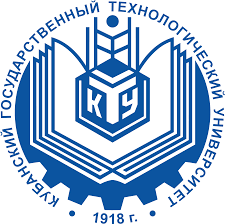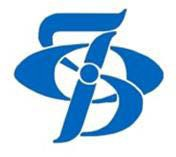
VII Съезд биофизиков России
Краснодар, Россия
17-23 апреля 2023 г.
17-23 апреля 2023 г.


|
VII Съезд биофизиков России
Краснодар, Россия
17-23 апреля 2023 г. |
 |
Программа СъездаСекции и тезисы:
Биомеханика. Биологическая подвижностьМатематическая модель управления глазным яблоком, реализуемого глазодвигательными мышцамиЯ.Ю. Миняйло1, А.П. Кручинина1* 1.Москва, МГУ имени М.В.Ломоносова; * a.kruch(at)moids.ru Аннотация.
В работе представлен алгоритм восстановления моментов сил шести глазодвигательных мышц по окулографической информации. Вычисления проведены на основе построения геометрической трехмерной модели каждой мышцы в отдельности исходя из данных о координатах начала мышцы и точки крепления мышцы к глазу. Проведенные расчеты применены для построения математической модели вестибулоокулярного рефлекса. Введение Вращение глазного яблока обеспечивают шесть глазодвигательных мышц: латеральная, медиальная, верхняя и нижняя прямые, верхняя и нижняя косые. Латеральная и медиальная мышцы обеспечивают вращение глаза в горизонтальной плоскости. Оставшиеся четыре мышцы работают в парах прямая плюс косая. Нижняя прямая и верхняя косая обеспечивают вращение глазного яблока вниз, а верхняя прямая и нижняя косая — вверх. Кроме того, косые мышцы отвечают за торсионные вращения глаза. Комбинированное сокращение глазодвигательных мышц реализует поворот глазного яблока в нужном направлении. Описание и анализ движений глаз важная задача для многих исследований. Современные технологии позволяют с высокой точностью отслеживать движения глаз. Чаще всего для этого используются видеоокулографы или электроокулографы. Однако, с помощью этого оборудования регистрируется лишь результат: в каком направлении и на сколько градусов повернулось глазное яблоко. Открытым и важным остается другой вопрос: какие глазодвигательные мышцы обеспечили наблюдаемое движение. Цель данной работы в построении математического алгоритма для описания управления глазным яблоком, реализуемого глазодвигательными мышцами. К полученной оценке уже могут применяться сравнения с вестибулярной информацией, зрительными задачами. В частности подобная модель полезна для замыкания математического описания вестибуло-окулярного рефлекса. Методы Глаз и глазодвигательные мышцы представляют из себя механическую систему. Для того, чтобы построить математическую модель глазодвигательного аппарата мы ввели ряд упрощений: - глазное яблоко — абсолютно твердое тело, идеальный шар с радиусом R = 12.43 мм; - центр вращения глаза совпадает с его геометрическим центром и остаётся неподвижной точкой при любых движениях глазного яблока; - глазодвигательные мышцы представлены упругими нитями, которые могут активно сокращаться. В такой постановке задача заключается в описании вращений шара с неподвижным центром, в результате приложения касательных сил к его поверхности. Для задания вращений удобнее всего использовать ось вращения и угол поворота. Для глаза точка приложения силы — это точка касания направляющего вектора силы мышцы и поверхности глазного яблока, направленного вдоль волокон мышцы в сторону её крепления. Так как в упрощении мышцы представлены нитями, вектор силы направлен вдоль мышцы. Радиус-вектор направлен из начала системы координат, связанной с глазом к точке касания. Векторное произведение вектора силы на радиус-вектор дает вектор момента силы, который направлен вдоль оси вращения тела. Следовательно, единичный вектор момента силы совпадает с единичным вектором, задающим ось вращения. Тогда, зная радиус-вектор точки касания и направляющий вектор силы для каждой мышцы, мы можем вычислить момент силы этой мышцы и ось вращения, которую она обеспечивает. В данной задаче применим принцип суперпозиции. В основу расчета моментов легли геометрические параметры глазодвигательных мышц, представленные в работе [1]. Для каждой мышцы заданы координаты (x, y, z) начал и координаты крепления к глазному яблоку, относительно начала координат, расположенного в неподвижном геометрическом центре сферы. Для каждой мышцы мы в отдельности решено три подзадачи: 1) вычисление координат единичного радиус-вектора; 2) вычисление координат единичного вектора силы; 3) вычисление вектора момента силы мышцы. Для апробации модели была проведена серия экспериментов с вращением испытуемых в трёх плоскостях, соответствующих функциональным парам полукружных каналов. Вращения проводились на специализированных креслах-центрифугах по синусоидальному закону. Во время вращений регистрировался вектор угловой скорости головы и ответные движения глаз. Поле зрения испытуемых при этом было перекрыто, чтобы минимизировать влияние визуальной информации на движения глаз. Таким образом, в проведённых экспериментах в управлении глазом участвовала преимущественно вестибулярная информация. Из работы [2] известно, что каждый полукружный канал активирует строго одну глазодвигательную мышцу каждого глаза. В таком случае, чем больше проекция углового ускорения головы на ось чувствительности канала, тем больший вклад вносит соответствующая ему мышца в движение глазного яблока. Из экспериментальных данных мы можем оценить проекцию угловой скорости на полукружные каналы и сформировать управление глазодвигательными мышцами, а затем результирующую ось вращения глаза найти как линейную комбинацию осей активированных мышц. Вычисляя ось вращения в каждый момент времени записи мы можем смоделировать движение глазного яблока и сравнить его с записью глаз из эксперимента. Результаты. Для шести глазодвигательных мышц получены координаты единичных векторов моментов сил, они же направляющие вектора осей вращения. Предложена модель управление глазным яблоком в виде линейной комбинации осей вращения активированных глазодвигательных мышц. Применение модели для описания вестибулоокулярного рефлекса позволяет достоверно оценить линейную компоненту на медленных фазах нистагма и восстанавливать коэффициенты степени активации мышц. Коэффициент активации каждой мышцы полагается равным проекции нормированного единичного вектора угловой скорости головы на канал, активирующий данную мышцу. Литература [1] Hongmei Guo, Zhipeng Gao, Weiyi Chen The biomechanical significance of pulley on binocular vision // BioMedical Engineering OnLine 2016 [2] Szhentagothai J. - Das Rolle Der Einzelnen Labyrinthrezeptoren Bei Der Orientation Von Augen Un Copf Im Raume. // Academiai Kiado, Budapest,—1952 Mathematical model of eyeball control implemented by the oculomotor musclesY.U. Minyaylo1, A.P. Kruchinina1* 1.Moscow, Lomonosov MSU; * a.kruch(at)moids.ru Annotation.
The calculations were carried out on the basis of constructing a geometric three-dimensional model of each muscle separately based on data on the coordinates of the muscle beginning and the point of muscle attachment to the eye. The paper presents an algorithm for restoring the six oculomotor muscles (OEM) force moments based on oculographic information. A three-dimensional geometric model is constructed for each muscle, based on muscle beginning coordinates the and the point of muscle attachment to the eye. The calculations performed were applied to construct a mathematical model of the vestibulo-ocular reflex. Introduction The eyeball rotations are provided by six oculomotor muscles: lateral, medial, upper and lower straight, upper and lower oblique. The lateral and medial muscles provide rotation of the eye in the horizontal plane. The other four OEMs work in pairs straight and oblique. The lower straight and upper oblique provide downward rotation of the eyeball, and the upper straight and lower oblique provide upward rotation. In addition, the oblique muscles are responsible for the torsion rotations of the eye. The combined contraction of the oculomotor muscles implements the eyeball rotation in the right direction. Description and eye movements analysis is an important task for many studies. Modern technologies allow us to track eye movements with high accuracy. Commonly video or electro-oculography are used for this. However, with the help of this equipment, only the result is recorded: direction and amplitude the eyeball turned. Another issue remains open and important: which oculomotor muscles provided the observed movement. The purpose of this work is to construct a mathematical algorithm for describing the control of the eyeball, implemented by the oculomotor muscles. Comparisons with vestibular information and visual tasks can already be applied to the received assessment. The model is useful for closing the mathematical description of the vestibular-ocular reflex. Methods The eye and oculomotor muscles are a mechanical system. In order to build a mathematical model we have introduced a number of simplifications: - the eyeball is an absolutely solid body, a perfect ball with a constant radius R = 12.43 mm; - the eye rotation center coincides with its geometric center and remains a fixed point during any eyeball movements; - OEMs are represented by strings that can actively contract. In these terms the task is to describe sphere rotations with a fixed center, as a result of the tangential forces applied to its surface. To set rotations it is most convenient to use the rotation axis and the rotation angle. The force application point to eyeball is muscle guiding force vector contact point and eyeball surface directed along the muscle fibers towards its eye socket attachment. According to muscles represented by strings, force vector is directed along the string. The radius vector is directed from the coordinate system origin associated with the eye to the contact point. The vector product of the force vector by the radius vector gives the force moment, which is directed along axis rotation. Therefore, the force moment unit vector coincides with the unit vector defining the rotation axis. So, the contact point radius vector and the force guiding vector for each OEM, allow us to calculate the muscle force moment and the rotation axis it provides. The geometric parameters of OEMs presented in paper [1] formed the basis for calculating the moments. For each muscle the origin coordinates (x, y, z) and the attachment to the eyeball coordinates are given, relative to the origin located in the fixed sphere geometric center. For each muscle we individually solved three calculating sub-tasks: 1) the coordinates of a unit radius vector; 2) the unit force vector coordinates; 3) the muscle force moment. To test the model, a series of experiments was conducted with the subjects rotations in three planes corresponding to the semicircular channels functional pairs. Rotations were carried out on specialized centrifuge chairs according to the sinusoidal law. During the rotations, the head angular velocity vector and the reciprocal eye movement oculogram were recorded. The subject's vision field was blocked in order to exclude the visual information influence on eye movements. Thus, vestibular information was mainly involved in the eye control. It is known [2] that each semicircular channel activates exactly one OEM of each eye. In this case, the greater the head angular acceleration projection on the channel sensitivity axis, the greater the corresponding muscle contribution to the eyeball movement. From experimental data we can estimate the angular velocity projection onto semicircular channels, form oculomotor muscle control and find the resulting eye rotation axis as an activated muscles axis linear combination. By calculating the axis at each time of recording, we can simulate the eyeball movement and compare it with the experiment eye recording. Results The unit force moment vector coordinates are obtained for six oculomotor muscles. They are also the rotation axes guiding vectors. A model of eyeball control in the form of rotation axes linear combination of activated OEM is proposed. Model application to describe the vestibulocular reflex makes it possible to reliably estimate the linear component in the slow phases of nystagmus and restore the coefficients of the degree of muscle activation. The muscle activation coefficient is assumed to be equal to normalized unit vector projection of the head angular velocity onto the channel activating this muscle. Bibliography [1] Hongmei Guo, Zhipeng Gao, Weiyi Chen. The biomechanical significance of pulley on binocular vision // BioMedical Engineering OnLine 2016 [2] Szhentagothai J. - Das Rolle Der Einzelnen Labyrinthrezeptoren Bei Der Orientation Von Augen Un Copf Im Raume. // Academiai Kiado, Budapest,—1952 Докладчик: Кручинина А.П. 131 2023-02-15
|